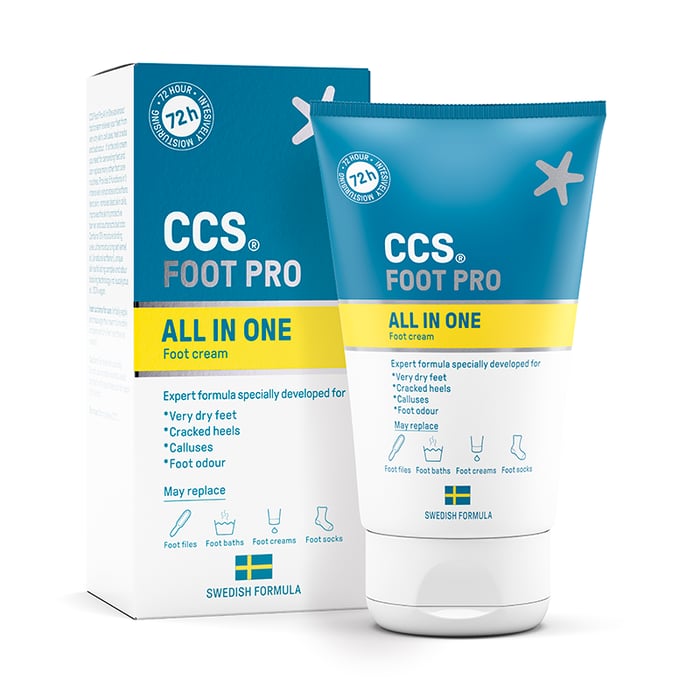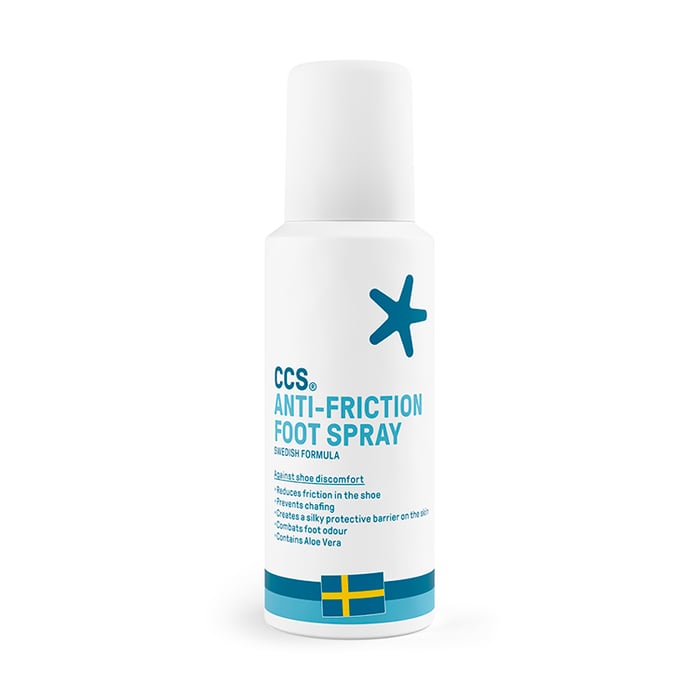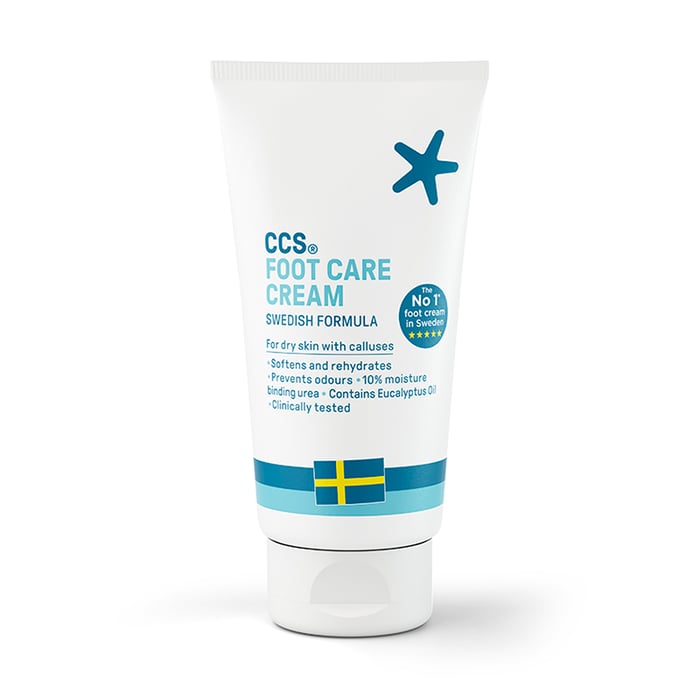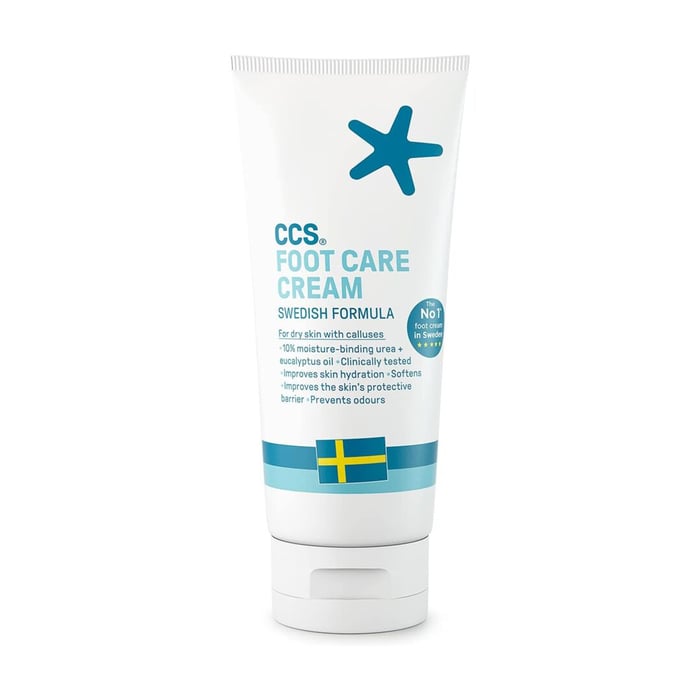Painful and Deep Foot Fissures
Foot fissures, more commonly referred to as heel fissures or cracked heels, can be incredibly painful and, if left untreated, can cause serious complications.
If you think you may have foot fissures or you are looking for more information about foot fissures and how to treat them, the below guide will tell you everything you need to know.
Read on to find out:
- What are foot fissures?
- What are the most common symptoms of foot fissures?
- What are the main foot fissures causes?
- How to diagnose foot fissures
- What is the best feet fissures treatment?
- Are there any home remedies for foot fissures?
- When to see your doctor about foot fissures
- How to prevent foot fissures?
- Foot fissures FAQs
What are foot fissures?
Foot fissures occur when the skin on the bottom of your heel becomes hard and calloused. This can make the skin become severely dry and cracked, which often results in deep and painful fissures on feet.
Foot fissures can happen to anyone, although there are certain groups that are more at risk, such as people who are overweight and those with diabetes.
In some cases, foot fissures can be treated with over-the-counter treatments. However, if you are suffering from deep and painful fissures, then you should seek advice from a medical professional.
What are the most common symptoms of foot fissures?
If you are not sure if you have deep fissures in feet or ball of foot fissures, discover the most common symptoms of foot fissures below:
- Rough, dry skin
- Deep, painful cracks
- Flaking and peeling skin
- Scaly skin
- Blisters
- Bad odour
- Swelling
- Discolouration
- Weakened skin
Depending on the cause of your foot fissures, your symptoms may vary. If left untreated, foot fissures can lead to deep foot ulcers, which can become infected, so it is important to heal fissures on feet.

What are the main foot fissures causes?
In most cases, foot fissures are caused by either an environment that is too dry or one that it is too moist. That being said, there are other foot and heel fissures causes, including:
Diabetes
Foot and heel fissures most commonly occur in people with diabetes. This is because this condition can damage the nerves in the feet and leave you more susceptible to foot problems.
Foot fissures, heel fissures and toe fissures are all more dangerous in people with diabetes, as they often lead to nonhealing foot ulcers.
Skin conditions
Common skin conditions such as eczema and psoriasis can cause dry skin on the feet, which, if left untreated, can develop into foot fissures. Severe corns and calluses on the feet can also cause the skin on the feet to split, which causes fissures.
Athlete’s foot
Athlete’s foot is a type of fungal infection that affects the feet. Also known as tinea pedis, Athlete’s foot can cause dry skin, which may develop into foot fissures or fissures between toes.
Cold, dry climates
If you live in a cold and dry climate, then you are much more likely to develop dry skin all over your body, including your feet. This in turn can lead to foot fissures.
Footwear
Cracked heels and heel fissures can be caused by wearing open-backed or unsupportive footwear, as these types of shoes do not cushion the area of skin under the heel.
Obesity
If you are classified as obese, then you are more likely to have dry skin on your feet and more likely to develop foot fissures. Due to the added pressure on your feet, if you do develop fissures, these can be severe and painful.
Physical activity
Increased physical activity, either from sports, hobbies or your occupation, can all increase your risk of developing a foot skin fissure. This is due to a greater risk of exposure to infections and environmental factors, as well as an increased risk of injury which can lead to fissures.
How to diagnose foot fissures
In most cases, foot and heel fissures can be diagnosed by identifying the most common symptoms of fissures as detailed above. These include rough and dry skin on the heels, ashy skin, deep and painful cracks in the skin and/or scaly skin.
However, if you are unsure if you have foot fissures or another type of foot problem, it can be a good idea to make an appointment with your doctor or a podiatrist for an official diagnosis.
What is the best feet fissures treatment?
If you are looking for heel fissures treatment, foot fissure treatment or toe fissures treatment, there are several medications and remedies that you can try. These include:
Medicated foot creams
Medicated foot creams such as CCS Foot Care Cream are specially formulated to treat very dry skin on the feet, making them the perfect skin fissure foot treatment for skin fissure ball of foot. Containing hydrating and healing ingredients, including urea, lactic acid and eucalyptus oil, this premium foot cream can help to heal and prevent foot fissures.
CCS Foot Care Cream can be bought over the counter at most pharmacies and online without the need for a prescription.
Prescription medications
If you have developed foot fissures as a result of a fungal infection or bacterial infection, then your doctor can prescribe antifungal and antibacterial medications if OTC treatments have proven ineffective.
You can also get prescribed medications that can help to treat infectious organisms that increase your risk of developing heel fissures.
If your foot or heel fissures have developed into open sores and these become infected, you will need a course of antibiotics.
Insoles or heel pads
Insoles and heel pads can be worn over the heel area to help heal heel fissures and to reduce heel fissure pain. These can be bought at most pharmacies and online and provide an affordable way to treat and manage deep fissures in the feet and deep fissures in heels.
Visit a podiatrist
If you have had little success using an over-the-counter treatment and you are not satisfied with the advice offered by your doctor, then you might want to book in to see a podiatrist.
Typically, a podiatrist will use special tools to remove any dead skin from your feet using a technique known as debridement. They may also recommend using a special tape or braces to hold the fissures together so that they can heal.
If you have diabetes and have developed foot fissures, then a podiatrist can help to ensure that you care for your feet and avoid any serious complications.
Other treatments for foot fissures include:
- Medical glue to seal the cracks in the skin
- Softening or removal agents
- Dressings or bandages to strap the heel
Are there any home remedies for foot fissures?
If you would prefer to treat your foot fissures using a home remedy, then there are several that you can try. However, it is worth noting that these are not medically-approved treatments for foot fissures.
Some of the most popular fissure foot homer remedies are:
Pumice stone
File your feet using a pumice stone or a foot file once a week to remove any hard and flaky skin on your heels. Filing your feet also helps the skin on your feet to absorb moisturising creams more effectively.
Foot soaks
Foot soaks can help to soften dry and hard skin whilst simultaneously removing dead skin cells. For best results, soak your feet in warm, soapy water each night before going to bed and then gently rub the affected area with a loofah.
Petroleum jelly
Before bed, apply a layer of petroleum jelly to the cracks in your feet and then put on a pair of 100% cotton socks. This can help to keep the moisture in while simultaneously allowing the skin to breathe.
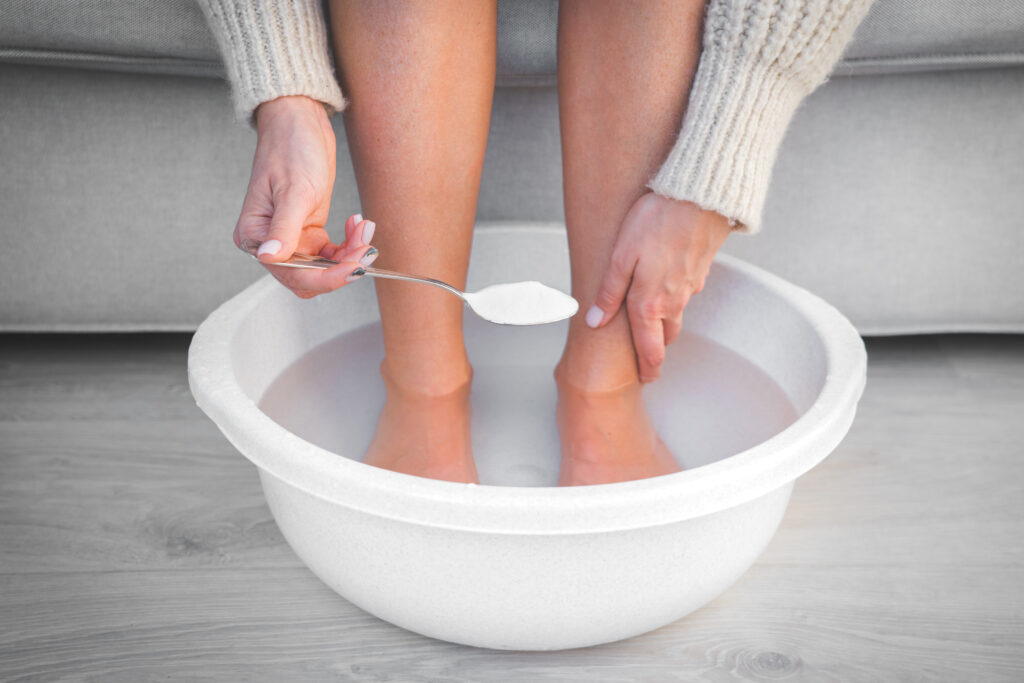
When to see your doctor about foot fissures?
Deep fissures in feet can be extremely painful and this can affect your overall quality of life.
If you have diabetes and you develop foot fissures, this can lead to mental health problems such as anxiety and stress which can make the ailment worse. If left untreated, foot and heel fissures can lead to foot ulcers, which are much harder to heal in diabetics and can result in the need for amputation.
If you have bleeding heel fissures, this can increase your risk of an infection.
How to prevent foot fissures?
To prevent foot fissures, there are several lifestyle and hygiene practices that you can adopt including:
- Do not wear open-heeled shoes such as flip-flops
- Do not walk barefoot on rough surfaces or in public swimming pools
- Avoid using harsh soaps and detergents
- Moisturise your feet daily with a foot cream
- Wear protective heel cups in your shoes
- Exfoliate the skin on your feet weekly
Frequently asked questions
What Are Heel Fissures?
Heel fissures, more commonly called cracked heels, occur when the skin around the heel becomes hard and dry and, over time, cracked. Although not a serious health problem in most cases, if left untreated, heel fissures can lead to severe complications, especially for diabetics.
What Causes Heel Fissures?
Heel fissures are caused by very dry skin which can occur due to a number of factors including a cold, dry climate, a skin condition such as eczema or by exposing the feet to rough surfaces
How To Heal Deep Heel Fissures?
Deep heel fissures that cause pain and bleeding may require treatment from a doctor or podiatrist. However, first you can try applying a heavy oil-based cream to the affected area before bed and then covering with a pair of socks. Do this for one week and, if your symptoms do not improve, make an appointment with your doctor.
How To Treat Deep Heel Fissures?
How To Treat Deep Heel Fissures?Deep heel fissures that are painful and bleeding should be examined by a doctor, as you risk getting an infection. The most effective treatments for deep heel fissures are a thick moisturising cream, insoles or heel pads and OTC pain relief medication if your fissures are causing you pain and discomfort.
How To Treat Foot Fissures?
Mild foot fissures can be treated by soaking the feet in warm water, using a foot pumice or foot file to gently remove dead skin and then applying a thick ointment or foot cream to the affected area. Repeat this every night for one week and your foot fissures should heal.
How Long Does It Take a Heel Fissure To Heal?
A mild heel fissure should heal in a week if you apply a thick, moisturising foot cream such as CCS Foot Care Cream twice a day. Deep heel fissures can take longer and often require two to three weeks of treatment before they are healed. If, after several weeks, you do not notice any signs of improvement, then you should make an appointment with your doctor or a podiatrist.
Do Foot Fissures Go Away?
Foot fissures are unlikely to go away without treatment, as the cracks will get bigger and deeper over time. This can cause pain and bleeding, which, in some cases, can lead to an infection. You can treat mild foot fissures with an over-the-counter foot cream such as CCS Foot Care Cream, which is specially formulated to treat very dry skin and cracks on the feet.


